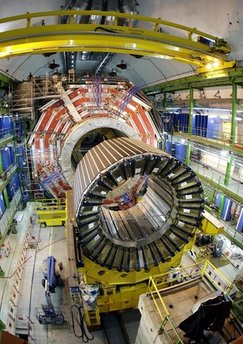Science and Health
Scientists bang sub-atoms
(China Daily/Agencies)
Updated: 2010-03-31 08:13
 |
Large Medium Small |
 |
|
In this May 31, 2007 file photo, a view of the LHC (large hadron collider) in its tunnel at CERN (European particle physics laboratory) near Geneva, Switzerland is shown. The world's largest atom smasher set a record for high-energy collisions on Tuesday, March 30, 2010 by crashing proton beams into each other at three times more force than ever before. In a milestone in the $10 billion Large Hadron Collider's ambitious bid to reveal details about theoretical particles and microforces, scientists at the European Organization for Nuclear Research, or CERN, collided the beams and took measurements at a combined energy level of 7 trillion electron volts. [Agencies] |
 |
|
In this March 22, 2007 file photo, the magnet core of the world's largest superconducting solenoid magnet (CMS, Compact Muon Solenoid) is shown in Geneva, Switzerland. The world's largest atom smasher set a record for high-energy collisions on Tuesday, March 30, 2010 by crashing proton beams into each other at three times more force than ever before. In a milestone in the $10 billion Large Hadron Collider's ambitious bid to reveal details about theoretical particles and microforces, scientists at the European Organization for Nuclear Research, or CERN, collided the beams and took measurements at a combined energy level of 7 trillion electron volts. [Agencies] |






